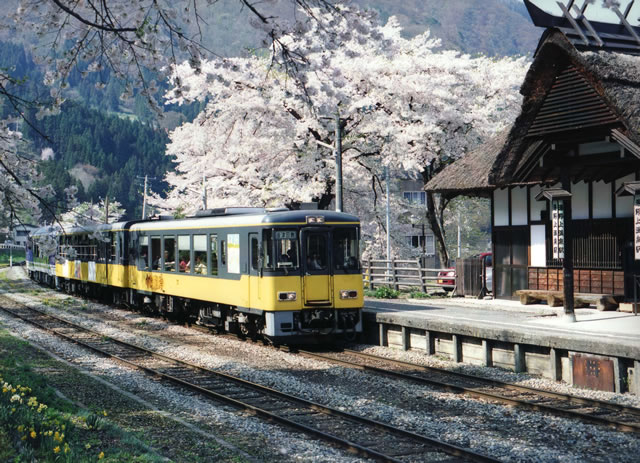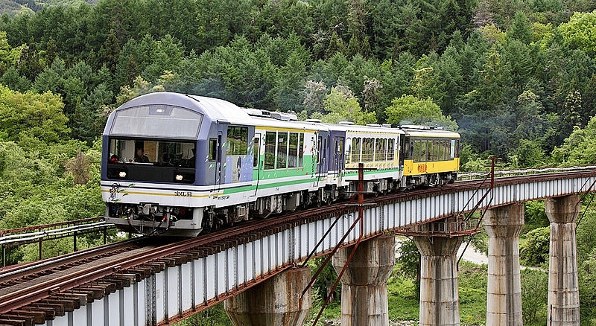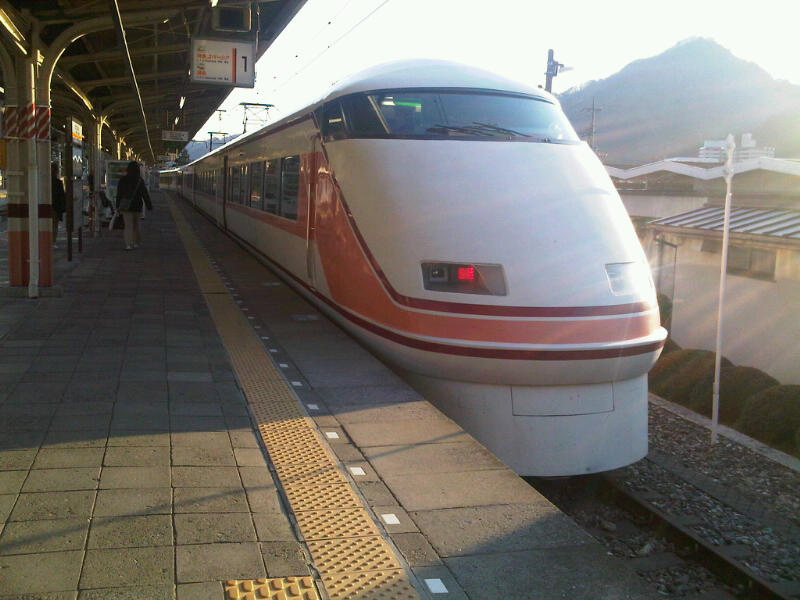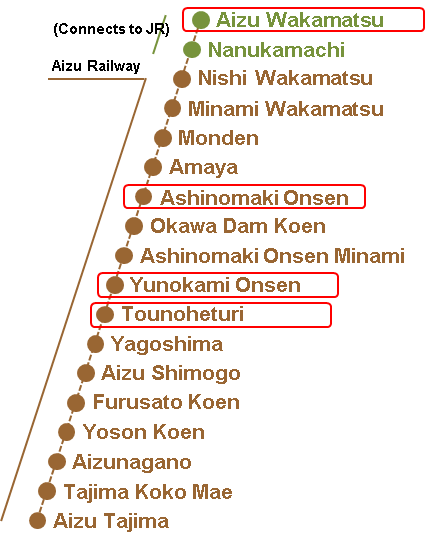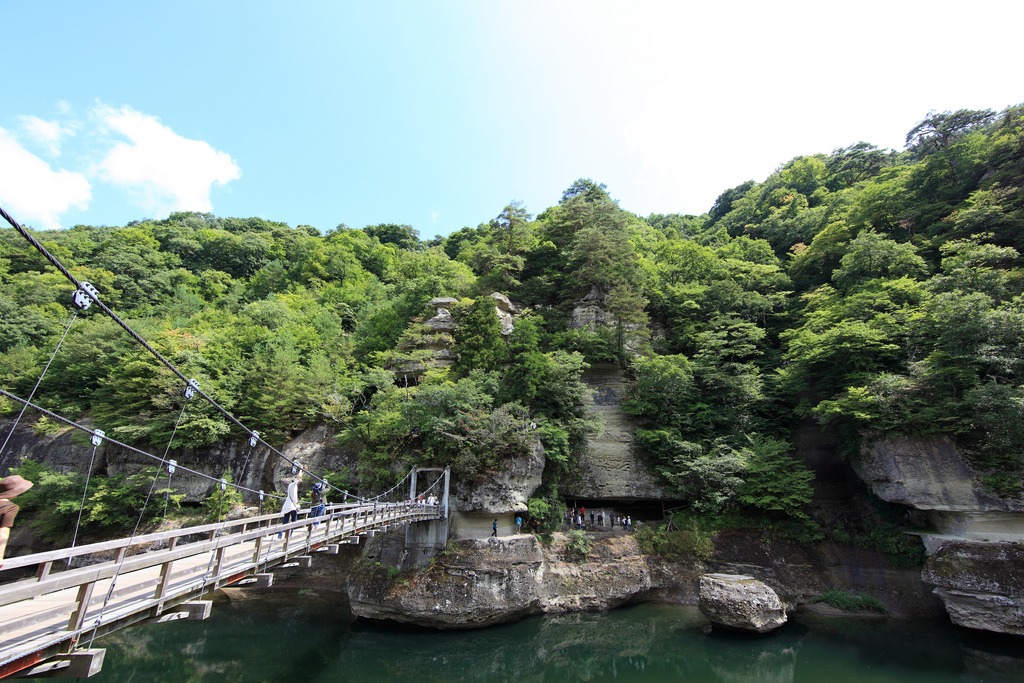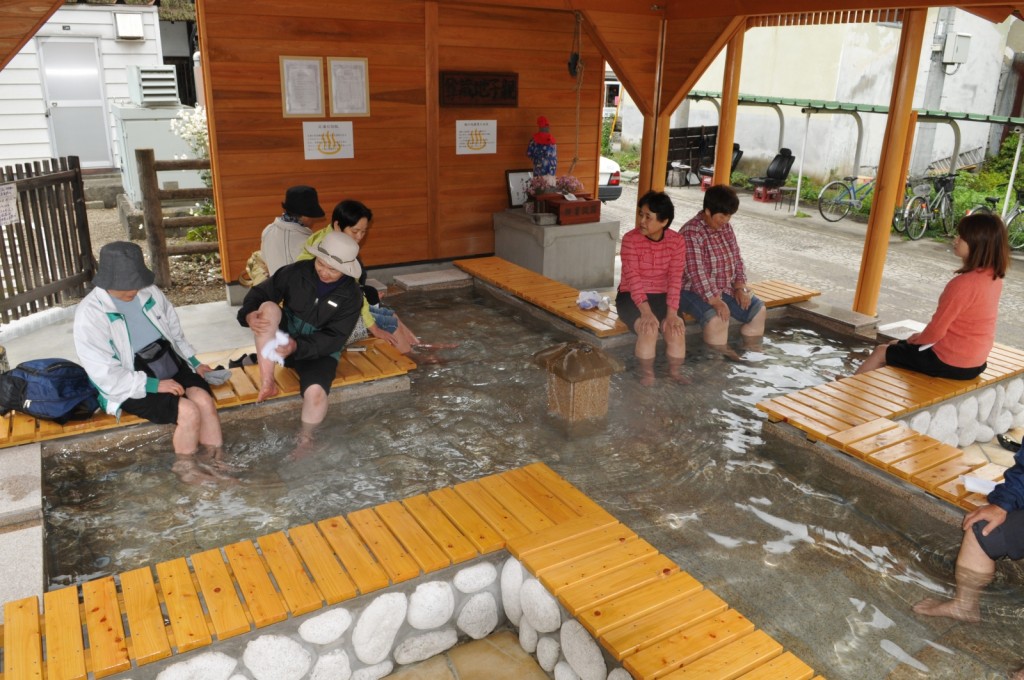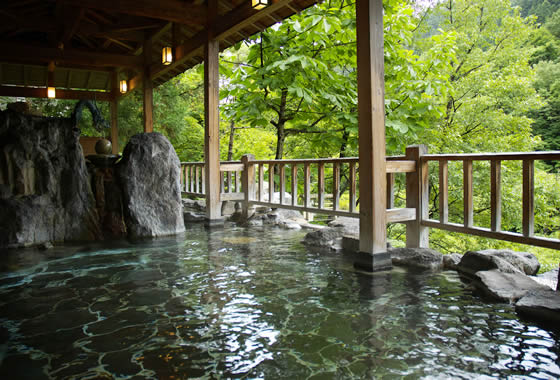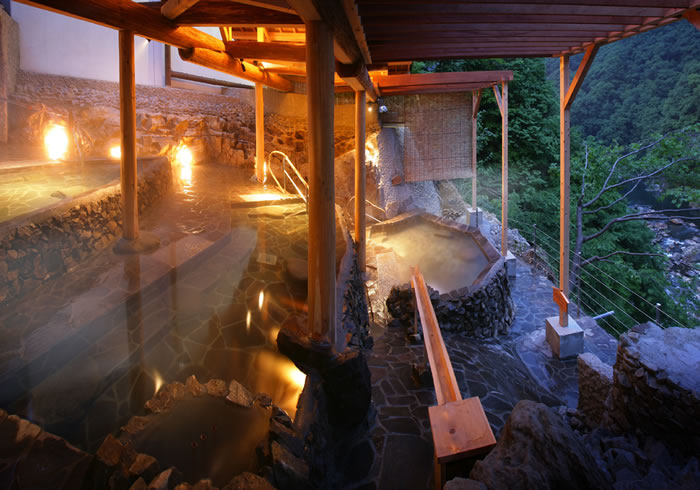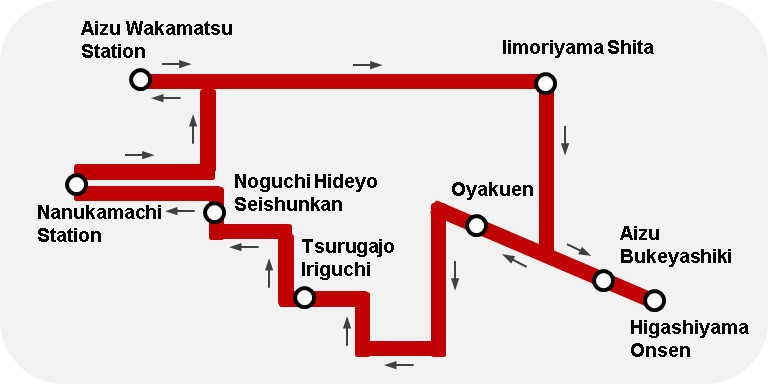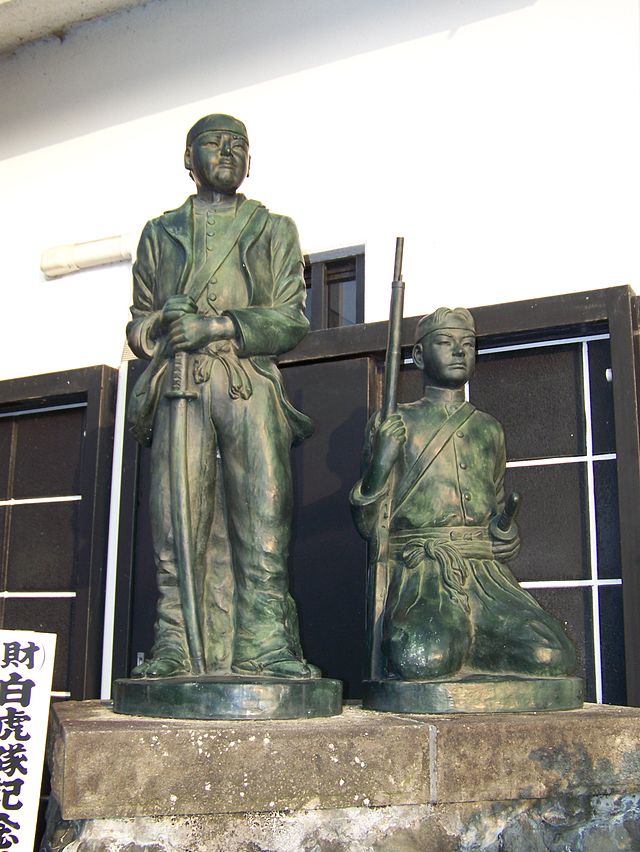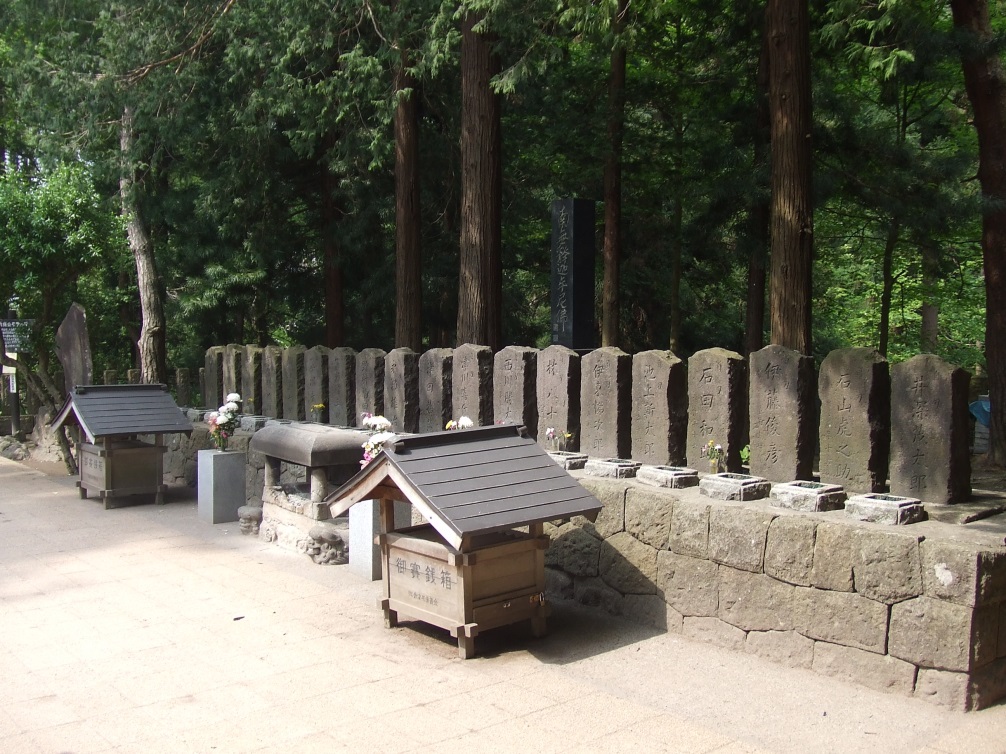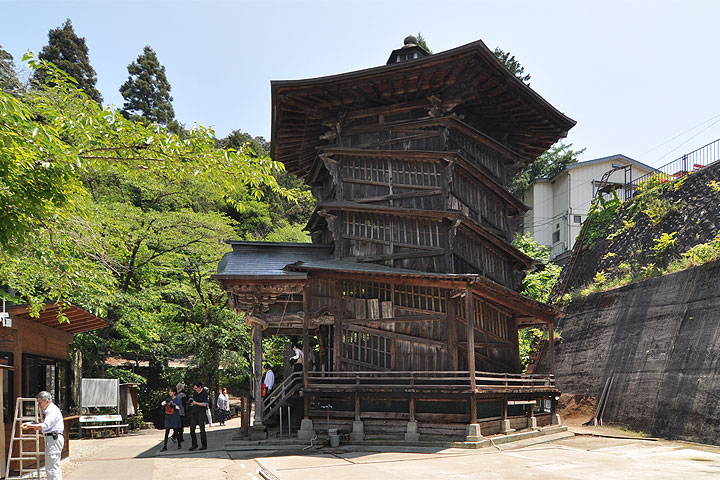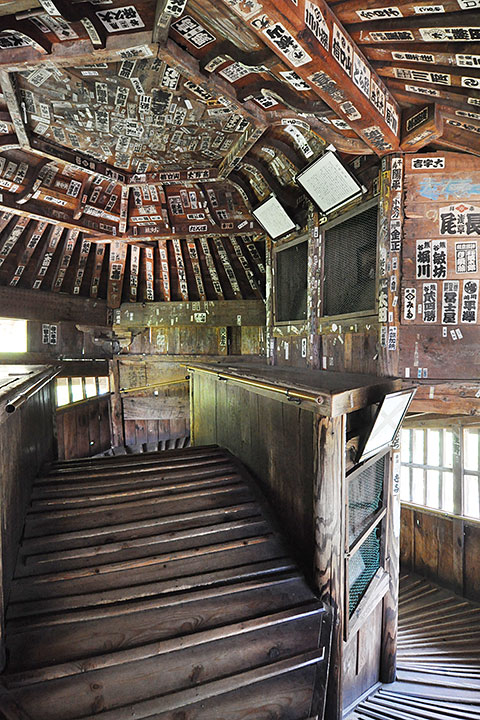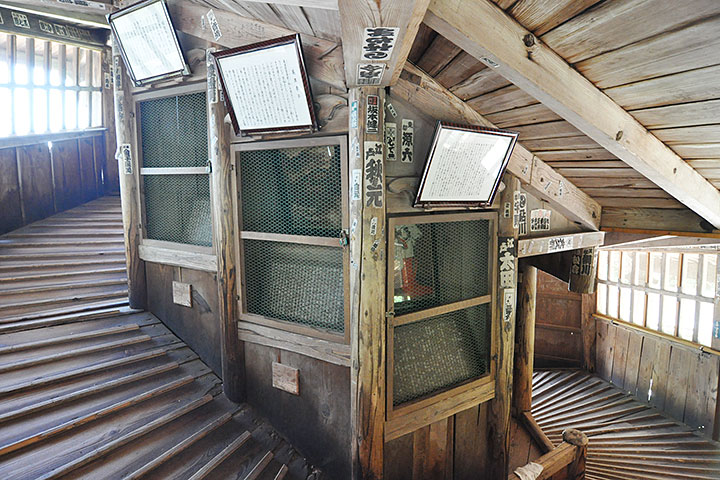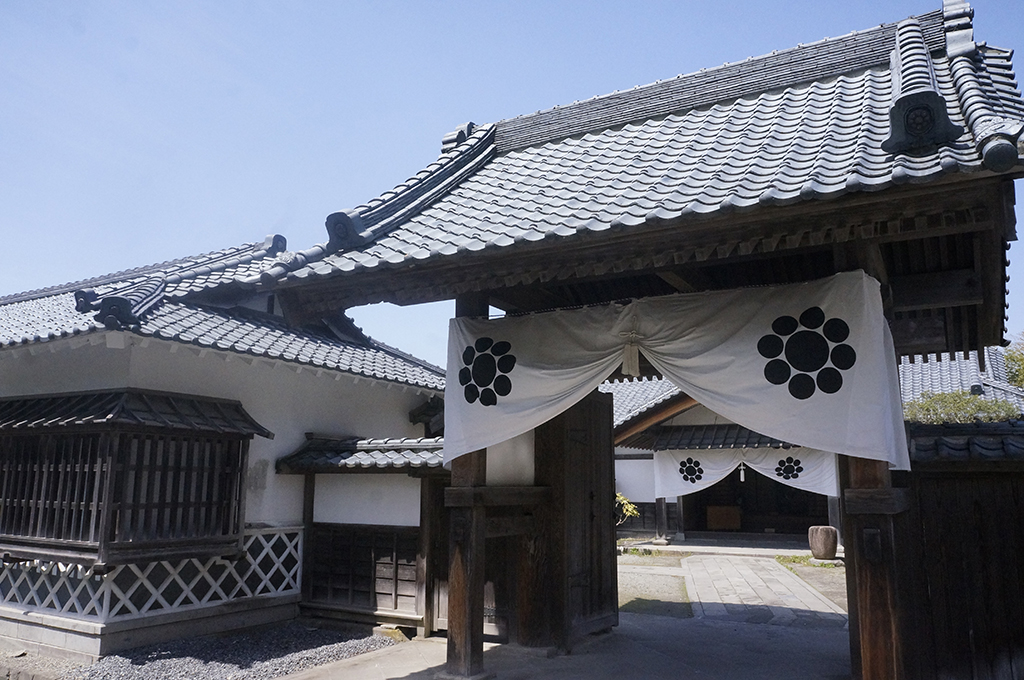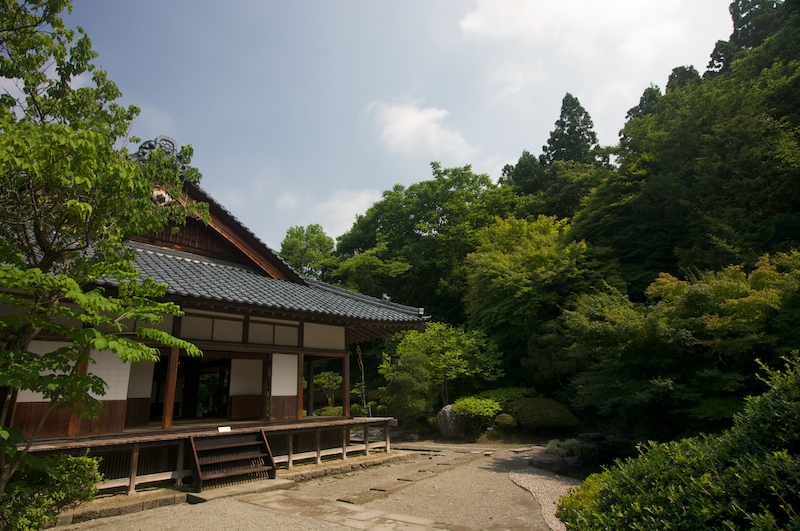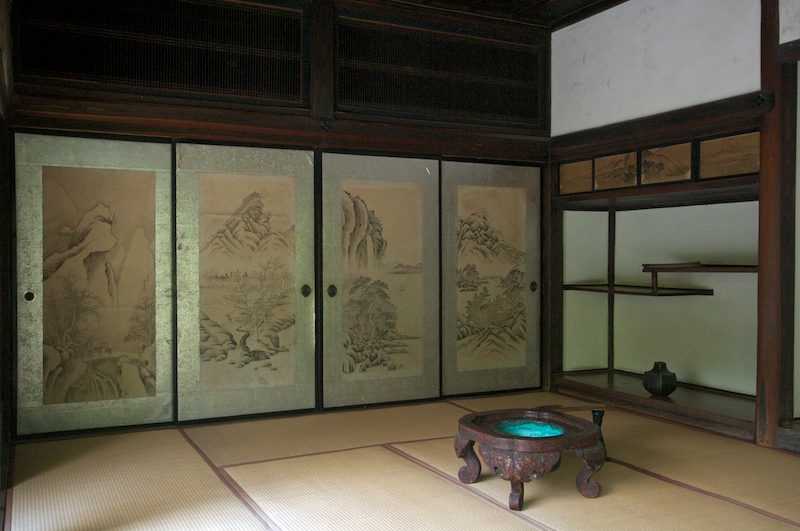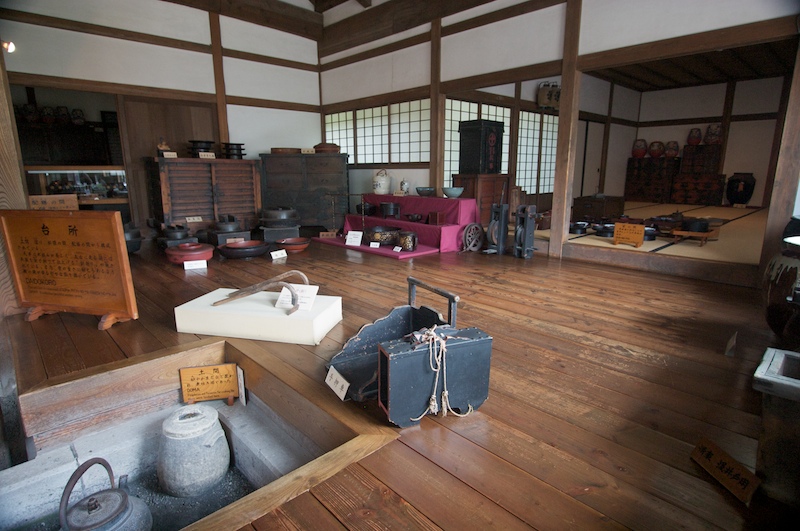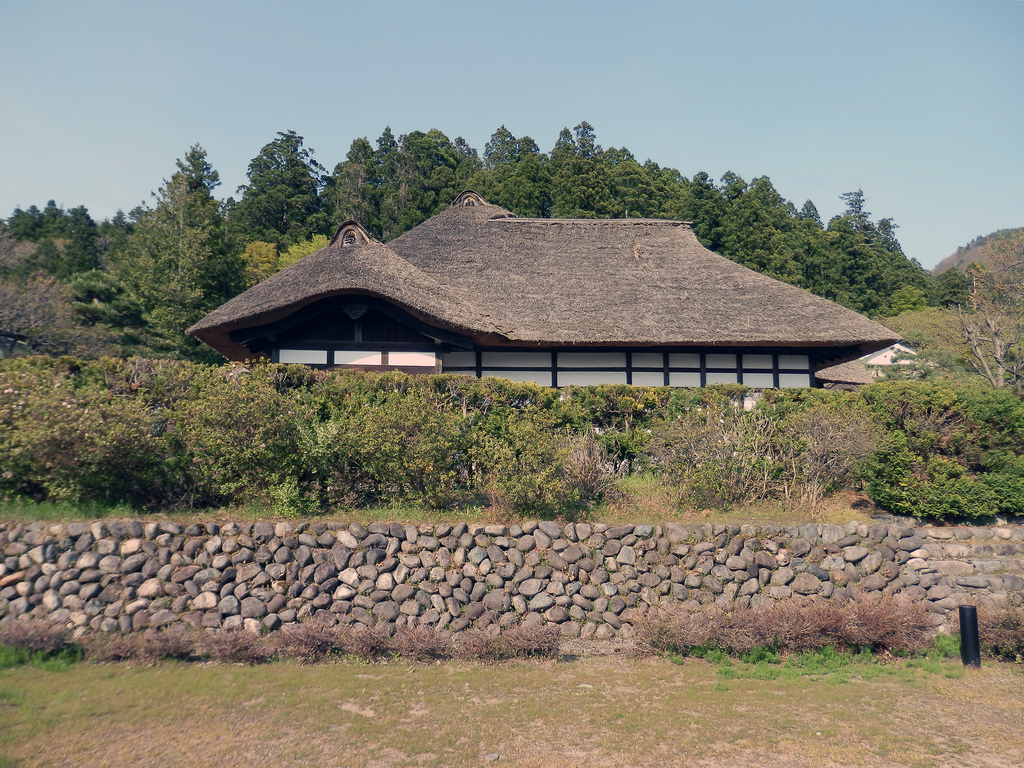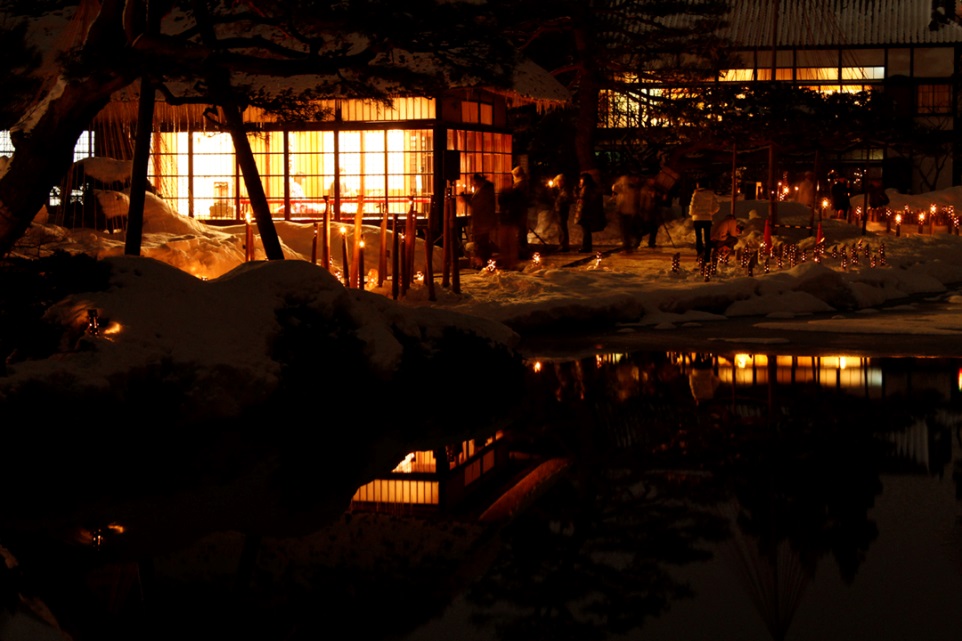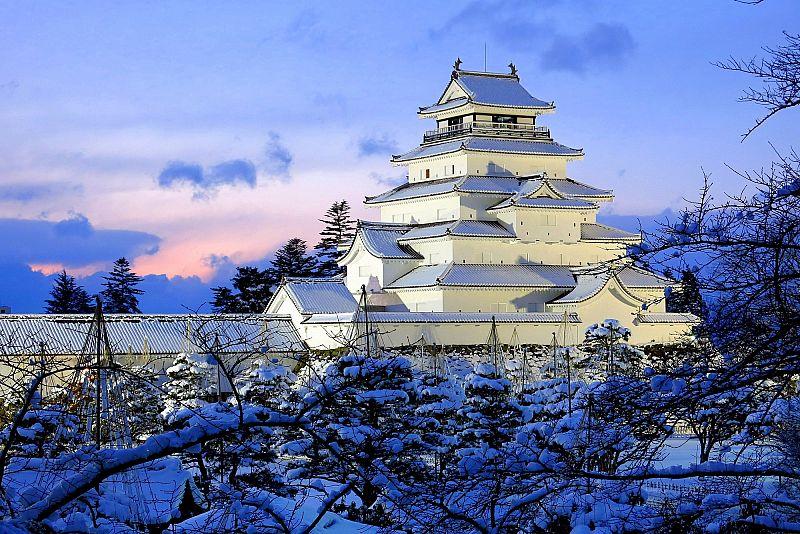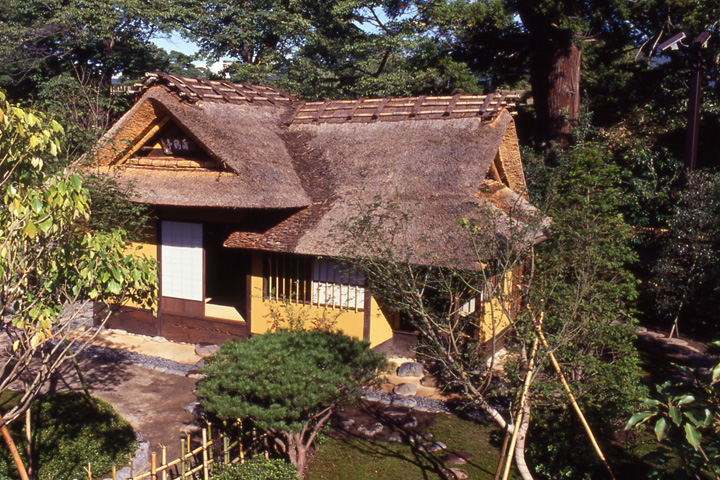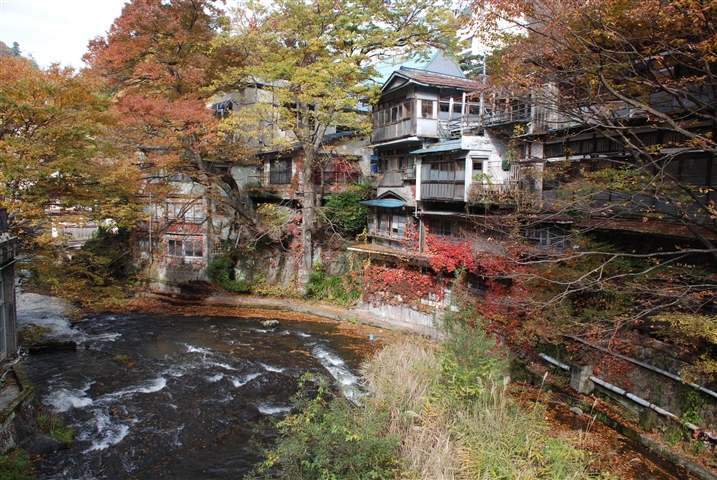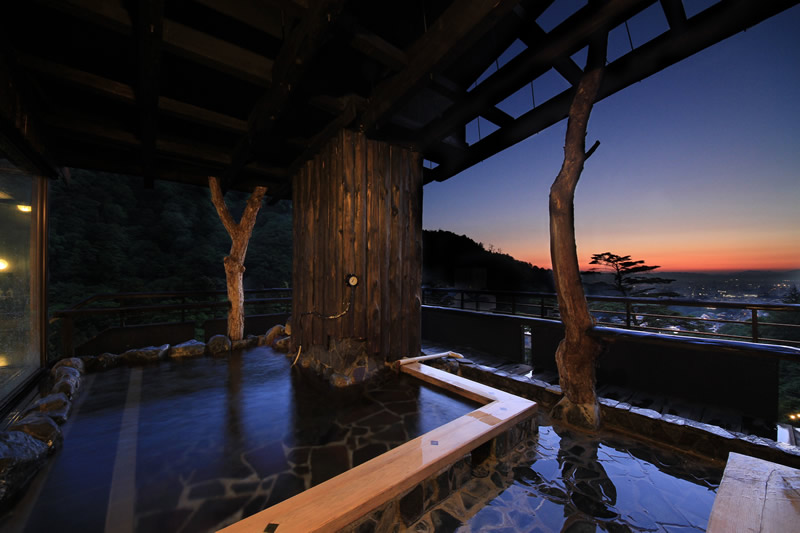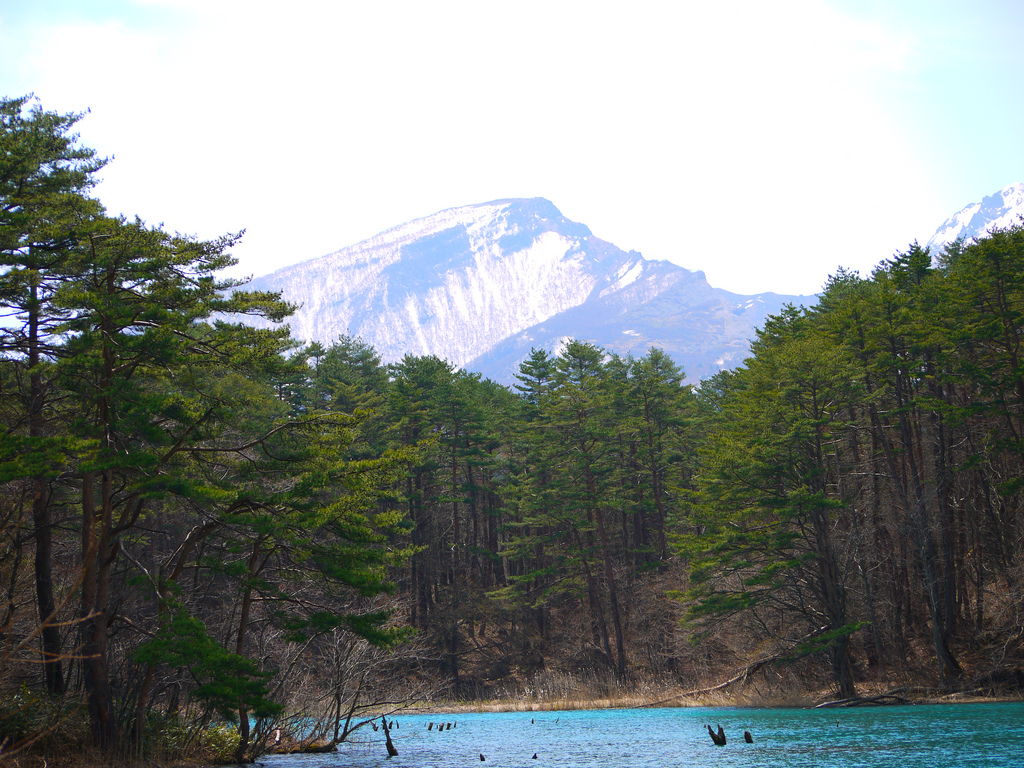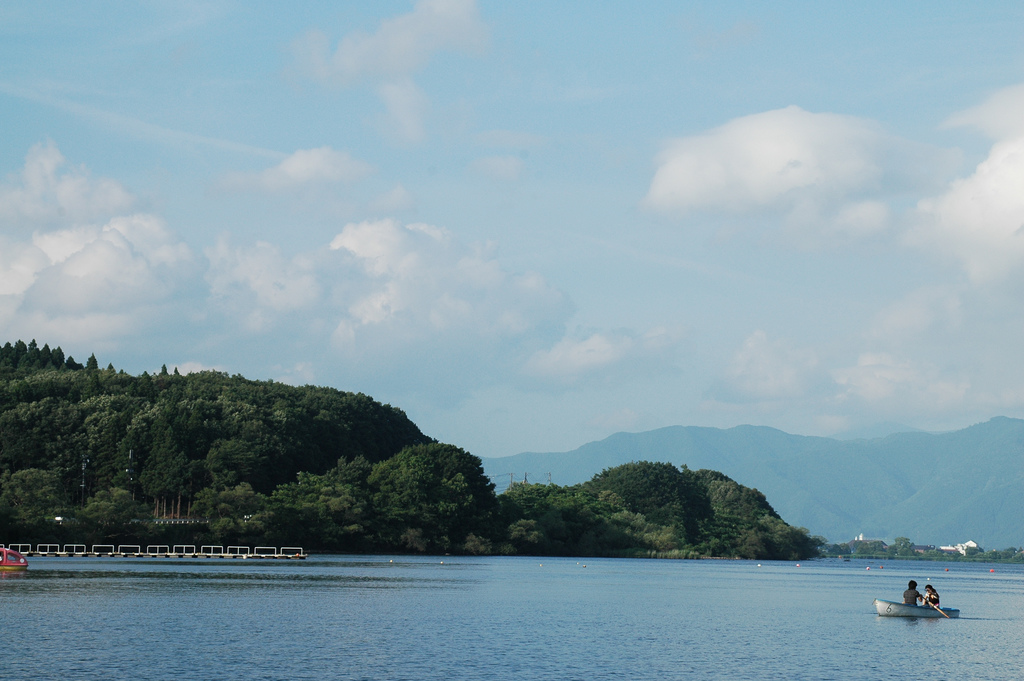
Experience Samurai Culture! A Trip around the Aizu Region by Rail
Aizu is an area where the samurai culture lives very strongly in the castles and townscape, and it's also packed full of charming tourist areas like hot springs. The popular Aizu spots featured in this article are all accessible by rail. If you come to Aizu, won't you also try taking a trip by rail?
This post may contain affiliate links. If you buy through them, we may earn a commission at no additional cost to you.
If you come to Japan, why don't you combine your interests and travel around the area on a gently-swaying train?
Actually, the Aizu region, which has a number of popular sightseeing spots, is a perfect area to go on a trip by rail.
aizutetsudo.jpThe Aizu railway is especially popular as a sightseeing railway, and there's plenty prepared so that you can enjoy your trip just by riding it.
Among the Aizu trains,the unique ”Oza Toro Tenbou Ressha” train has three types of cars attached: a tatami car, an observation car, and a trolley-style car.
aizu-concierge.comIf you ride the whole line, you can enjoy a trip of about an hour and a half.
The inside of the tatami car
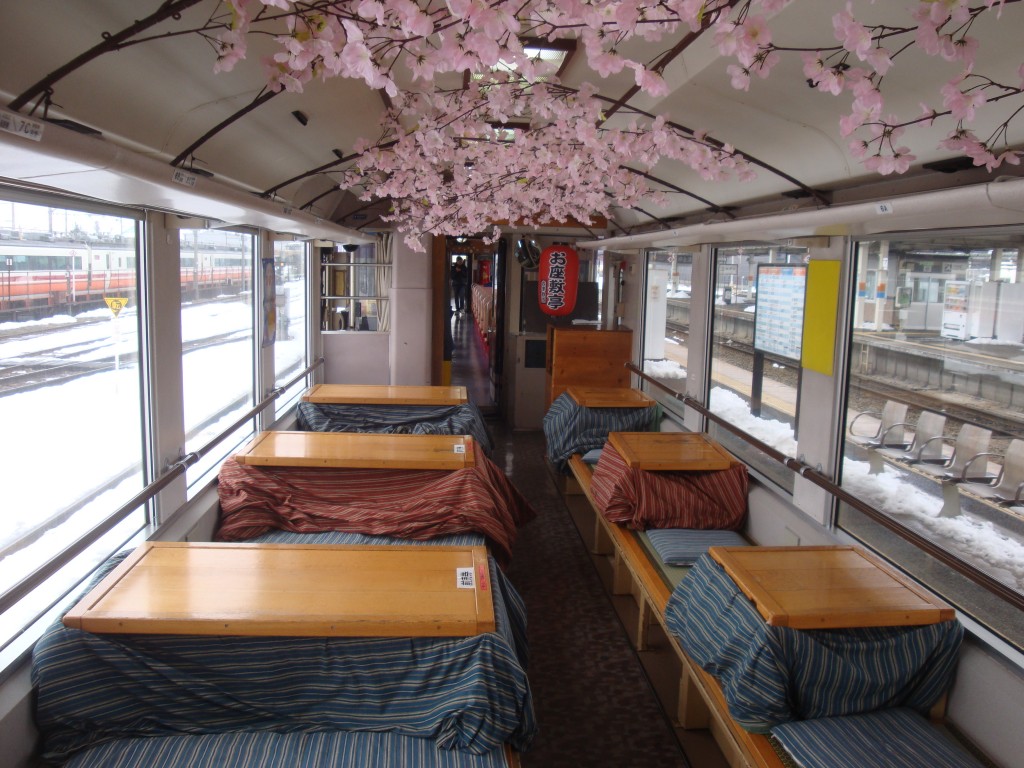 aizu-concierge.com
aizu-concierge.com
The tatami car has a narrow center aisle so that during the cold months of fall and winter, heated kotatsu tables can be placed for customers’ enjoyment.
Trolley car
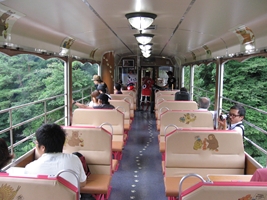
During the cold season the trolley has covered windows, but in the summer the glass is removed so passengers can feel the gentle breeze.
You can enjoy the trolley car just by riding it, but the area it passes through between Aizu-Tajima Station and Aizu Wakamatsu is full of charming sightseeing areas.
So this article will introduce recommended tourist spots etc. focusing on this section of the line.
[Note] The fastest way to reach Aizu-Tajima Station from Tokyo is to take the limited express train (limited express Specia) from Asakusa Station or Shinjuku Station, then change at Kinugawa-Onsen Station to the Aizu Railway’s AIZU Mount Express Gou train. If you do it properly, you can arrive in 180 minutes. However, the most comfortable way is taking the express Tobu Railway train from Tobu Asakusa Station or Kita-Senju Station. If you hop on a train bound for Aizutajima, which is direct, you will arrive in approximately 210 minutes. The fare is also cheaper that way.
Photo by くーさん on Flickr
First of all: the whole route
The route goes around the four stations of Tounoheturi Station, Yunokami Onsen Station, Ashinomaki Onsen Station, and Aizu Wakamatsu Station.
1. Tounoheturi Station
Five minutes from the Tounohetsuri station is a picturesque scenery of strangely shaped rocks that stretch along that have been shaped by weathering and corrosion for over million of years. Because of its strange shape, in 1943 it was designated as a national monument.
Photo by TANAKA Juuyoh (田中十洋) on FlickrIn the autumn and winter it’s completely covered by foliage or snow respectively, making it a spot famous for its beauty throughout all four seasons.
Access: Five minute walk from Tou-no-hetsuri Station.
Location: Shitabayashi Yagoshima, Shimogou-machi, Minamiaizu-gun
2.Yunokami Onsen, Ouchi-Juku Area
The Yunokami Onsen Station area not only has hot springs, but there are also trains and buses that can easily take you to the popular sightseeing spot Ouchi-Juku.
A. Yunokami Onsen
This area is said to have such a high volume of hot spring water due to its 7 sources that if you dug up a dry riverbed, hot water would well up. The area around the station is dotted with hot spring inns and guesthouses.
For people who want to leisurely enjoy the hot springs can check out the free foot baths around the station.
Since you’re only putting your legs in the water, there is no need to remove most of your clothing to enjoy the spring.
town.shimogo.fukushima.jpEveryone looks like they’re having so much fun…you definitely can’t leave without trying this.
Access: Less than 1 minute from Yunokami Onsen Station
Address: Yunokami, Shimogomachi, Minamiaizu-gin
People who want to experience a genuine hot spring should stay in hot spring inns or guesthouses. You can heal the exhaustion that comes from a stressful lifestyle by spending a lazy time in a hot spring inn that’s in the middle of the mountain scenery.
touryukan.comThere are plenty of charming inns and guesthouses in Yunokami Onsen, so please check out the following website to find the perfect place for your stay.
Yunokami Onsen Tourism Association Official Site (Japanese Only)
B. Ouchi-Juku
If you take a car or bus from Yunokami Onsen and ride it for about 15 minutes, you’ll arrive at Ouchi-Juku.
Ouchi-Juku is an inn town among the mountains that connect Aizu and Nikko. The military commanders Date Masamune and Toyotomi Hideyoshi also visited Ouchi-Juku, and in the Edo period it flourished as a stop on the daimyo’s (feudal lord) procession and for travelers.
www.hisuinosato.comHouses with hay-thatched roofs lined up in a row is one of Japan’s most familiar scenes in ancient times.
Restaurants and souvenir shops now line what was formerly a highway, and sell products the way they were made in ancient Japan. For example, if you watch a dumpling shop, you will discover how dumplings and fish were baked a long time ago in Japan, among many other things.
www.tobu.co.jpAccess: 15 minute bus ride from Yunokami Onsen Station
Address: Yamamoto 43, Ouchi, Shimogo-machi, Minamiaizu-gun
3. Ashinomaki Onsen
Ashinomaki Onsen Station is, true to its name, in the Ashinomaki hot springs area.
The Ashinomaki onsen has a history that dates back to about 1300 years ago. There are many lodges in high places that allow for a look at the river below, and you can bathe while gazing down into the valley.
www.ookawaso.co.jpThere are many charming places to stay in Ashinomaki Onsen. Please look through the website below for the perfect place to stay on your trip.
Ashinomaki Onsen Tourism Association Official Site (Japanese Only)
4. Aizu Wakamatsu
The city in the center of the Aizu region is Aizu Wakamatsu. Aizu Wamatsu is not only a hot springs area but also an area with many historical spots that are left over from the era of samurai.
The following are the recommended spots within Aizu Wakamatsu. From Aizu Wakamatsu Station, 2 tour buses, the Haikara-san and Akabe offer convenient routes for sightseeing going in the opposite directions, so you should choose one depending on your destination.
Then get on the “Akabe” and set off to sightseeing in the city!
aizukanko.comRoute of Akabe
A. Mt. Iimori
The first spot you should visit is definitely Mt. Iimori.
Mt. Iimori is famous for the incident in 1868, when the Byakkotai (“White Tiger Force”) fighting in the Boshin War between the restoration government troops and the shogunate committed suicide there.
The Byakkotai was a group of 16-17 year old samurai boys who were organized in Aizu, and though they were originally reserve troops, as the war progressed they ended up fighting on the front lines.
en.wikipedia.orgWhen the 20 soldiers retreated from battle, they groped along until they found Mt. Iimori. When they looked from Mt. Iimori towards the city, they were greeted by the scene of Tsuruga Castle completely surrounded by flames. With the knowledge that this was a lost battle, they all agreed to sacrifice themselves for the sake of their lord. Among those 20, 1 one of them miraculously lived, and he spread the word about the loyalty and the tragic fate of the Byakkotai around the country.
Mt. Iimori is the scene of that tragedy. Now the area is dotted with museums and graves dedicated to the Byakkotai, as well as a Buddhist shrine, so every year it flourishes more and more as a historical sightseeing spot.
The 19 graves of the Byakkotai
The 19 graves are lined up in a row. The graves were all lined up to face their lord’s Tsuruga Castle.
Sazaedou
Architectural Map (http://www.archi-map.jp)This hexagonal, three story shrine was built in 1796 and has a height of 16.5 meters.
Architectural Map (http://www.archi-map.jp)It was built so that the ascending stairs and the descending stairs are completely separate, so it’s completely safe for the many visitors in that there won’t be any bumping into anyone. This architectural style is rare throughout the whole world, and in 1996, it was declared a national important cultural property.
It’s a must-see for people who like architecture.
Architectural Map (http://www.archi-map.jp)Address: Bentenshita-1404 Ikkimachi Yahata, Aizu Wakamatsu-shi
B. Aizu Bukeyashiki (Aizu Samurai Residences)
The next recommended spot is the Aizu Bukeyashiki (Aizu Samurai Residences).
www.tif.ne.jpThe Aizu Bukeyashiki was a residence begun by the top chief retainer of the Aizu domain, and it has important cultural properties of the prefecture like the Bailiff’s office and the tearoom. You can enjoy the appearance of traditional Japanese architecture from the Edo period.
Chief Retainer’s Residence
Photo by foliosus on FlickrThe appearance of what the rooms looked like at the time have been reproduced.
Photo by foliosus on FlickrThis is the kitchen.
Photo by foliosus on FlickrBailiff’s office
Photo by Marco Capitanio on FlickrHatamoto the Matsudaira family’s daikan-jinya (where a magistrate who governed in place of the lord during the Edo period) was transferred and restored here.
Address: Ishiyama Innai Higashiyamamachi, Aizu Wakamatsu-shi
C. Oyakuen
The next spot is the Oyakuen.
In the middle of the Edo period, this was built as a holiday house for the Aizu daimyo. There are more than 400 types of medicinal herbs and lakes dotted around the properly. When you come to the park, please try the medicinal tea that you can only get here.
city.Aizu Wakamatsu.fukushima.jpThis is a shot from a festival that was held at the Oyakuen in the past.
Address: 8-1 Hanaharumachi, Aizu Wakamatsu-shi
D. Tsuruga Castle
The biggest highlight of the area is Tsuruga Castle. It withstood violent battles during the Boshin War, and earned a reputation as an impregnable castle.
aizukanko.comNo words are necessary when you stand in front of this castle. You will be full to the brim with the majesty of the sight.
Near the castle, there is a tea room called "Chashitsu Rinkaku" that was reportedly built by Shoan, the son of Sen no Rikyu, Japan’s great tea master. Here you can enjoy a nice cup of tea.
yae-mottoshiritai.jp alpsphotogallery.blog54.fc2.comAddress: 1-1 Otemachi, Aizu Wakamatsu-shi
E. Higashiyama Onsen
This is an onsen within Aizu Wakamatsu city limits.
This hot spring spa, Higashiyama Onsen, has a history of more than 1300 years.
These springs were beloved by many Aizu feudal retainers and writers. How does going here to heal the exhaustion from your trip sound?
en.wikipedia.org aizu-higashiyama.comAizu Higashiyama Onsen Tourism Association Official Site (Japanese Only)
In conclusion: Returning to Tokyo
When it’s time to return to Tokyo, there is the option of taking the shinkansen. From Aizu Wakamatsu Station, you can take the Banetsu West Line to Koriyama, and from there take the Tohoku Shinkansen to Tokyo.
ja.wikipedia.orgOn the way to Koriyama on the Banetsu West Line, on the left side you will be able to see Mt. Bandai and on the right Lake Inawashiro, both beautiful sights that you can enjoy on your way back to the city.
Mt. Bandai
Photo by clipvain on FlickrLake Inawashiro
Photo by k14 on FlickrGood news, everyone! Three people can win a tour around Aizu Wakamatsu just by answering the quiz correctly!
Won’t you take this chance and apply? You can personally experience Aizu!
|
<Quiz> 1. How many people were in the famous Byakkotai that ran away from the end of the tragedy in the Bakumatsu? A. 20 B. 40 C. 60 (Hint: The answer is in this article) 2. What is the name of the city that popular tourism spot Spa Resort Hawaiians is in? A. Machida City B. Iwaki City C. Sapporo (Hint: The answer is in this article) 3. The Aizu area is famous for a type of liquor. What kind? A. Beer B. Shouchu C. Japanese Sake (Hint: The answer is in this article) |
Please click below for the campaign details and the application form.
This application period has ended.
Thhumbnail: Sakarin Sawasdinaka / Shutterstock.com
The information in this article is accurate at the time of publication.

